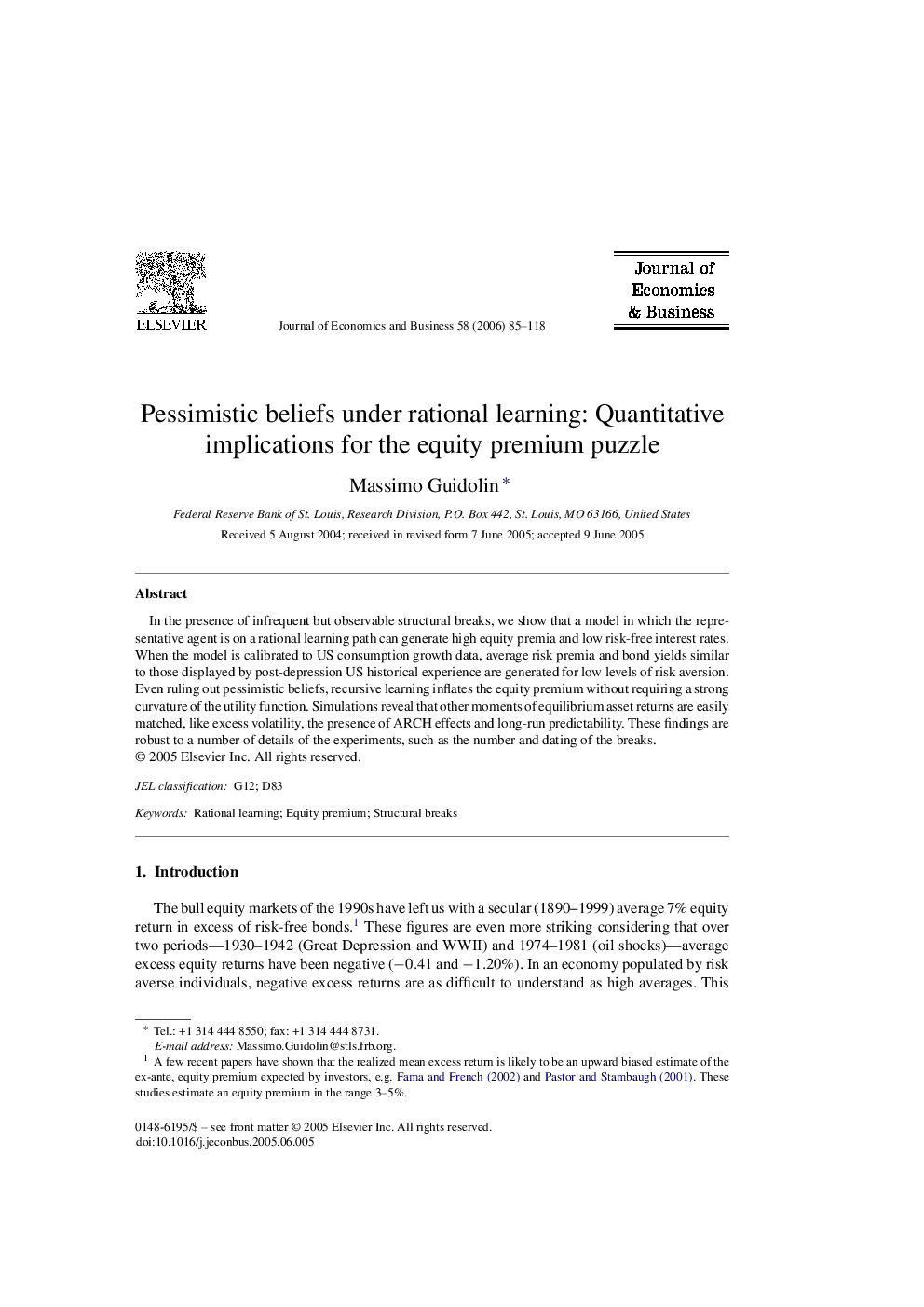| Article ID | Journal | Published Year | Pages | File Type |
|---|---|---|---|---|
| 958181 | Journal of Economics and Business | 2006 | 34 Pages |
In the presence of infrequent but observable structural breaks, we show that a model in which the representative agent is on a rational learning path can generate high equity premia and low risk-free interest rates. When the model is calibrated to US consumption growth data, average risk premia and bond yields similar to those displayed by post-depression US historical experience are generated for low levels of risk aversion. Even ruling out pessimistic beliefs, recursive learning inflates the equity premium without requiring a strong curvature of the utility function. Simulations reveal that other moments of equilibrium asset returns are easily matched, like excess volatility, the presence of ARCH effects and long-run predictability. These findings are robust to a number of details of the experiments, such as the number and dating of the breaks.
